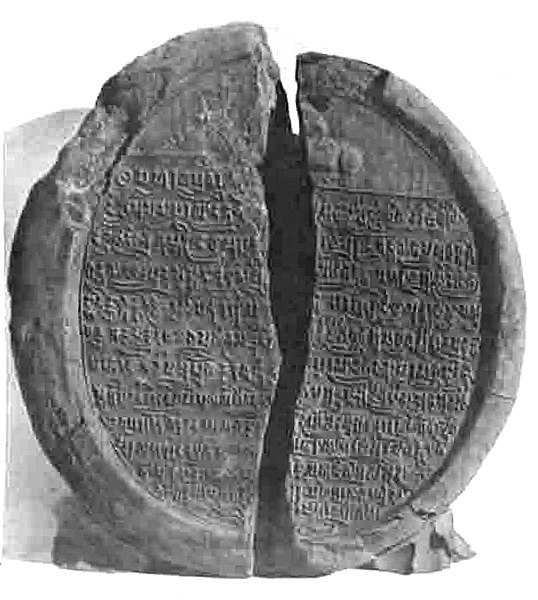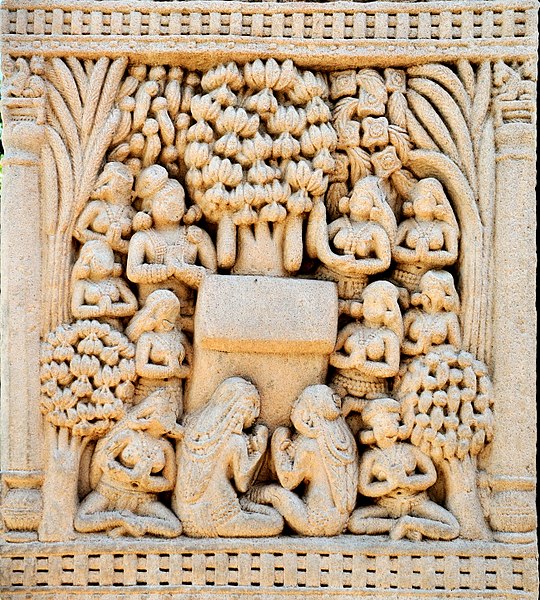Nalanda was a renowned Buddhist mahavihara in ancient and medieval Magadha, eastern India. Nalanda is considered to be among the greatest centers of learning in the ancient world. It was located near the city of Rajagriha and about 90 kilometres (56 mi) southeast of Pataliputra. Operating from 427 until 1197 CE, Nalanda played a vital role in promoting the patronage of arts and academics during the 5th and 6th century CE, a period that has since been described as the "Golden Age of India" by scholars.
The ruins of Nalanda Mahavihara
Nalanda was founded by the Gupta emperors in the early 5th century and then expanded over the next 7 centuries.
Nalanda clay seal of Kumaragupta III. The inscription is in Sanskrit, late-Gupta script, the man shown has Vaishnava mark on his forehead, and seal has Garuda-vahana on upper face.
Seal of Harsha found in Nalanda
Magadha also called the Kingdom of Magadha or the Magadha Empire, was a kingdom and empire, and one of the sixteen Mahajanapadas, 'Great Kingdoms' of the Second Urbanization, based in southern Bihar in the eastern Ganges Plain, in Ancient India. Magadha was ruled by the Brihadratha dynasty, the Pradyota dynasty, the Haryanka dynasty, the Shaishunaga dynasty, the Nanda dynasty, the Mauryan dynasty, the Shunga dynasty and the Kanva dynasty. It lost much of its territory after being defeated by the Satavahanas of Deccan in 28 BC and was reduced to a small principality around Pataliputra. Under the Mauryas, Magadha became a pan-Indian empire, covering large swaths of the Indian subcontinent and Afghanistan.
Magadha empire under Kanva dynasty
Cyclopean Wall of Rajgir which encircled the former capital of Magadha, Rajgir. Amongst the oldest pieces of cyclopean masonry in the world
King Bimbisara visits the Bamboo Garden (Venuvana) in Rajagriha; artwork from Sanchi.
Magadha kingdom coin, c. 350 BCE, Karshapana








